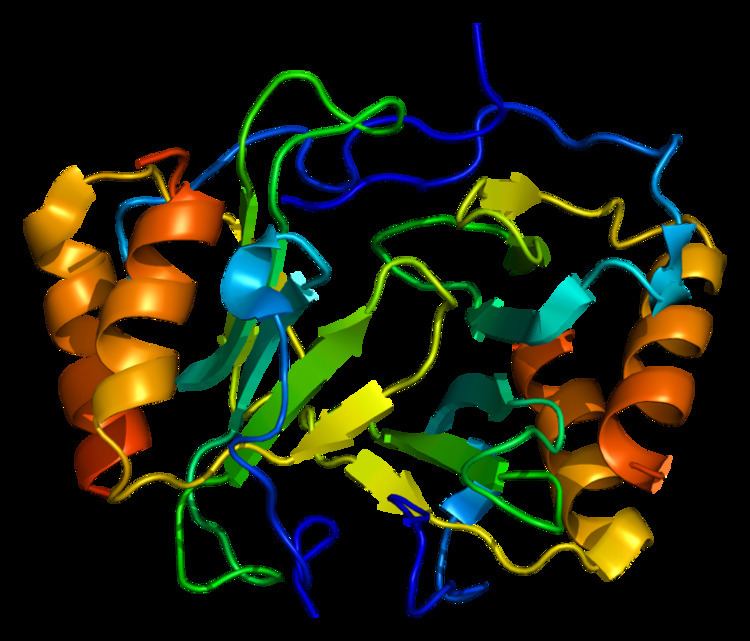Entrez 5196 | Ensembl ENSG00000163737 | |
 | ||
Aliases PF4, CXCL4, PF-4, SCYB4, platelet factor 4 External IDs OMIM: 173460 MGI: 1888711 HomoloGene: 87791 GeneCards: PF4 | ||
Platelet factor 4 (PF4) is a small cytokine belonging to the CXC chemokine family that is also known as chemokine (C-X-C motif) ligand 4 (CXCL4) . This chemokine is released from alpha-granules of activated platelets during platelet aggregation, and promotes blood coagulation by moderating the effects of heparin-like molecules. Due to these roles, it is predicted to play a role in wound repair and inflammation. It is usually found in a complex with proteoglycan.
Contents
Genomics
The gene for human PF4 is located on human chromosome 4.
Function
Platelet factor-4 is a 70-amino acid protein that is released from the alpha-granules of activated platelets and binds with high affinity to heparin. Its major physiologic role appears to be neutralization of heparin-like molecules on the endothelial surface of blood vessels, thereby inhibiting local antithrombin III activity and promoting coagulation. As a strong chemoattractant for neutrophils and fibroblasts, PF4 probably has a role in inflammation and wound repair.
PF4 is chemotactic for neutrophils, fibroblasts and monocytes, and interacts with a splice variant of the chemokine receptor CXCR3, known as CXCR3B.
Clinical significance
The heparin:PF4 complex is the antigen in heparin-induced thrombocytopenia, an idiosyncratic autoimmune reaction to the administration of the anticoagulant heparin. PF4 autoantibodies have also been found in patients with thrombosis and features resembling HIT but no prior administration of heparin.
The human platelet factor 4 kills malaria parasites within erythrocytes by selectively lysing the parasite's digestive vacuole.
